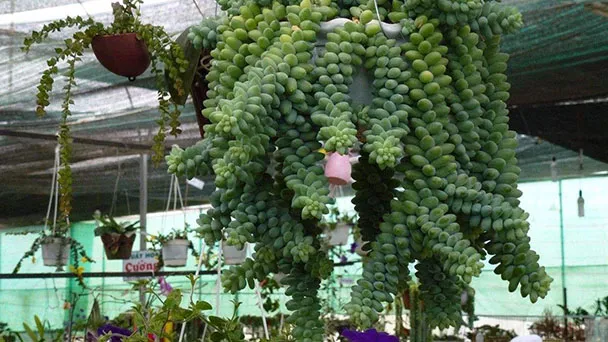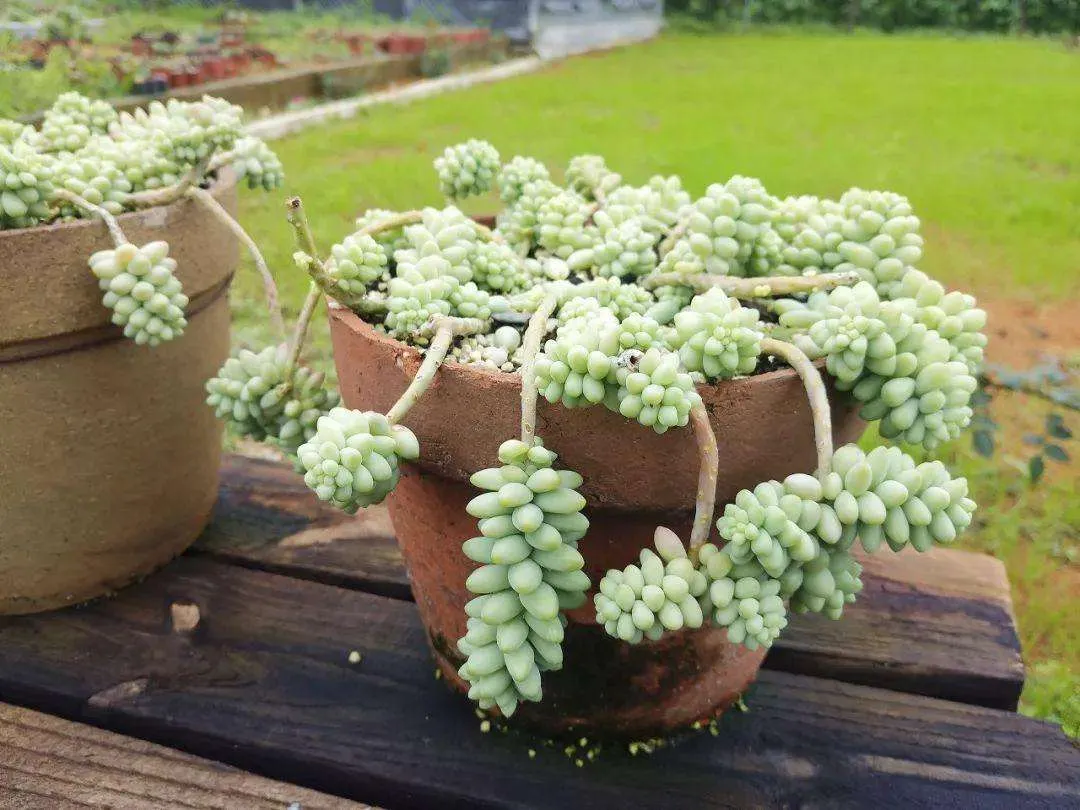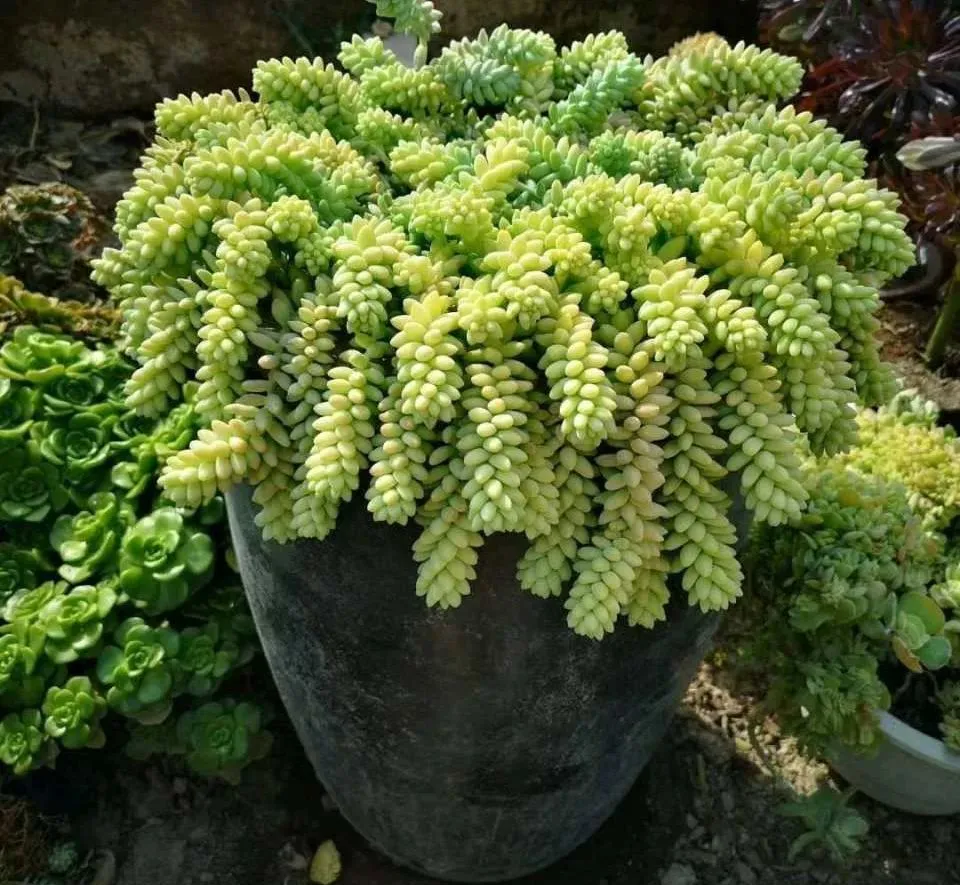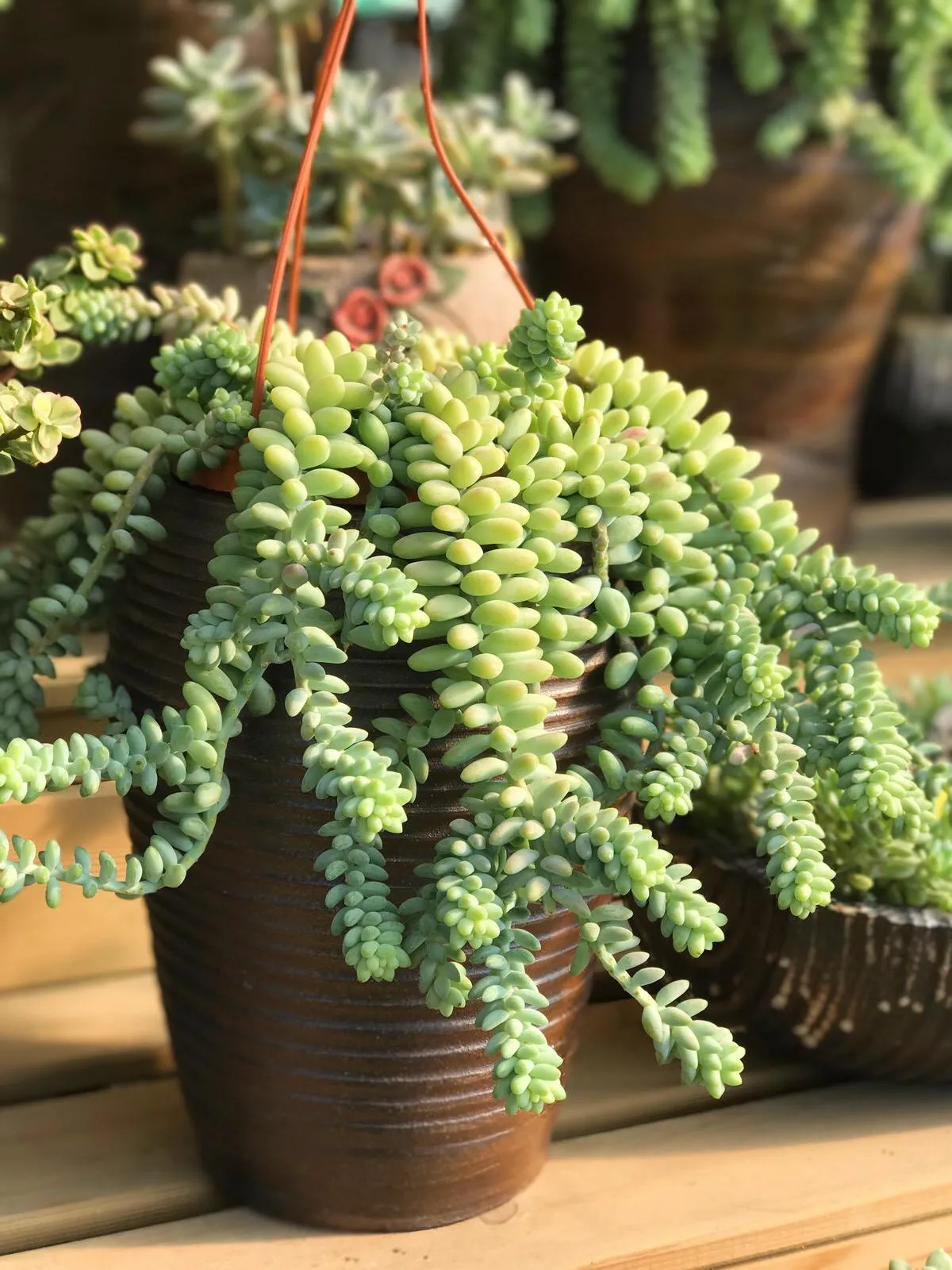Why Are My Burros Tail Shriveling?
Written by Ivy
Dec 13 2021

Burro's tail shriveling is mainly caused by insufficient watering and rotten roots, and may also be related to light and soil. Under normal circumstances, if the leaves of burro's tail are shriveled, we just need to water burro's tail and the leaves will recover.
If they do not recover after watering, we should consider the roots of burro's tail at this time. If there is a problem with the root, burro's tail cannot absorb the water in the soil. It is useless to pour more water. Some burro's tail roots are pulled out of the soil. Some branches have sparse roots and some have no roots directly. No wonder the leaves of burro's tail are dry after watering.


If they do not recover after watering, we should consider the roots of burro's tail at this time. If there is a problem with the root, burro's tail cannot absorb the water in the soil. It is useless to pour more water. Some burro's tail roots are pulled out of the soil. Some branches have sparse roots and some have no roots directly. No wonder the leaves of burro's tail are dry after watering.

Causes of Burro's Tail Shriveling
-
Too much light
- Root rot

- Excessive watering
- Impervious soil
How To Stop Your Burro's Tail From Shriveling
- Watering Schedule
- Temperature And Sun Exposure

- Soil Requirement
Read More:
Latest Updated
- Benefits of Bugleweed - 7 Science-backed Health Benefits
- Bugleweed Dangers & Side Effects - Is It Poisonous?
- How to Plant Evergreen Trees - What You Should Know
- When to Plant Evergreens - Grow Guide for Evergreen Trees
- 12 Wonderful Evergreen Shrubs for Your Garden
- 12 Popular Evergreen Plants with Pictures for Beginners
- When And How To Prune A Lilac Bush Like a Pro
- How to Grow & Care for Lilac Vine (Hardenbergia Violacea)
- Japanese Lilac Tree (Syringa Reticulata) Care & Propagation Guide
- Shumard Oak Pros and Cons - What to Know
Popular Articles
- Winter maintenance of Antirrhinum Majus
- How to Grow Terminalia Mantaly Tree
- How to Grow and Care for Crossostephium Chinense
- How to grow Antirrhinum Majus in spring
- Peristeria Elata (Dove Orchid) Profile: Info & Care Guide
- Underwatered Snake Plant (Sansevieria Trifasciata) - Signs And How To Fix
- How to Care for Brazilian Jasmine Plant (Mandevilla Sanderi)
- How to Grow & Care for Graptopetalum Purple Delight in Summer
- Rosa Chinensis (China Rose): Plant Growing & Care Tips
- How to Care for Baby Sun Rose (Aptenia Cordifolia)